Human Orbital Spaceflights
![]()
International Flight No. 161STS-58Columbia (15)58th Space Shuttle missionUSA |
 |
 |
 |
||
![]()
Launch, orbit and landing data
walkout photo |
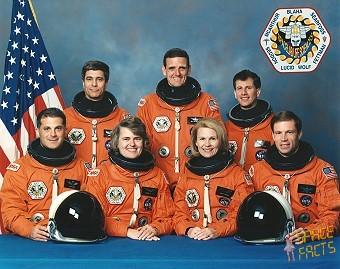 |
||||||||||||||||||||||||||||
alternative crew photo |
|||||||||||||||||||||||||||||
alternative crew photo |
Crew
| No. | Surname | Given names | Position | Flight No. | Duration | Orbits | |
| 1 | Blaha | John Elmer | CDR | 4 | 14d 00h 12m 32s | 225 | |
| 2 | Searfoss | Richard Alan | PLT | 1 | 14d 00h 12m 32s | 225 | |
| 3 | Seddon | Margaret Rhea | MS-1, PLC | 3 | 14d 00h 12m 32s | 225 | |
| 4 | McArthur | William Surles, Jr. "Bill" | MS-2, FE | 1 | 14d 00h 12m 32s | 225 | |
| 5 | Wolf | David Alexander "Bluto" | MS-3, EV-2 | 1 | 14d 00h 12m 32s | 225 | |
| 6 | Lucid | Shannon Matilda Wells | MS-4, EV-1 | 4 | 14d 00h 12m 32s | 225 | |
| 7 | Fettman | Martin Joseph | PS-1 | 1 | 14d 00h 12m 32s | 225 |
Crew seating arrangement
|
 |
|
||||||||||||||||||||||||||||||||
Backup Crew
|
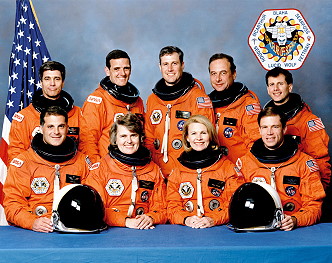 |
|||||||||||||||
alternative crew photo |
Hardware
| Orbiter : | OV-102 (15.) |
| SSME (1 / 2 / 3): | 2024 (7.) / 2109 (11.) / 2018 (11.) |
| SRB: | BI-061 / RSRM 34 |
| ET: | ET-57 (LWT-50) |
| OMS Pod: | Left Pod 05 (4.) / Right Pod 05 (4.) |
| FWD RCS Pod: | FRC 2 (15.) |
| RMS: | - |
| EMU: | EMU No. 2027 (PLSS No. 1015) / EMU No. 2013 (PLSS No. 1005) |
Flight
|
Launch from Cape Canaveral (KSC) and
landing on the Edwards
AFB, Runway 22.
The launch was originally planned for October 14, 1993. Due to a computer failure this attempt was cancelled. The second attempt one day later was cancelled again - this time due to a S-Band transponder failure. The Space Shuttle Columbia mission STS-58 was the second Spacelab flight dedicated to life sciences research. Columbia's seven crewmembers performed a series of experiments to gain more knowledge on how the human body adapts to the weightless environment of space. While in Earth orbit, almost every human physiological system undergoes some form of adaptation. Understanding the causes of these changes will aid NASA in the effort to fly longer missions as well as give researchers insight into medical problems experienced by individuals on Earth. The STS-58 crew performed experiments focusing on the cardiovascular, regulatory, neurovestibular and musculoskeletal systems of the body. The experiments performed on Columbia's crew and on laboratory animals (including 48 rats), along with data collected on the SLS-1 mission (STS-40) in June 1991, provided the most detailed and interrelated physiological measurements acquired in the space environment since the Skylab program in 1973 and 1974. Spacelab Life Sciences 2 consisted of 14 experiments focusing on the cardiovascular, regulatory, neurovestibular and musculoskeletal systems of the body. Eight of the experiments used the astronaut crew as subjects and six used rats. A broad range of instruments - some, unique hardware and others, standard equipment - were used for the human subjects throughout the mission. Equipment items included a Gas Analyzer Mass Spectrometer, rotating dome and a rotating chair, a Body Mass Measuring Device, Inflight Blood Collection System, Urine Monitoring System, strip chart recorders, incubators, refrigerator/freezers, a low-gravity centrifuge and an echocardiograph. The primary goal of the SLS-2 mission was to conduct experiments in a variety of disciplines to address important biomedical questions related to physiological responses to microgravity and subsequent readaptation to gravity. The science also is constructed to ensure crew health and safety on missions of up to 16 days in duration. A third goal of SLS-2 was to demonstrate the effectiveness of hardware standardization in experiment- to-rack interfaces for future applications on Space Station. Throughout the space program, cardiovascular "deconditioning" has often been observed in spaceflight crews. This diminished capacity of the cardiovascular system is evidenced by decreased orthostatic tolerance, or lightheadedness, upon return to Earth's gravity and is usually accompanied by increases in resting heart rate and decreases in pulse pressure post-flight. Measurements of body fluids in microgravity reveal a redistribution of circulating blood and body water toward the head and neck area. The fluid redistribution fools the body into thinking there is too much fluid and results in a reduction of fluid volume. This overall shift may influence cardiovascular parameters such as cardiac output, arterial and venous pressure and stroke volume. Upon return to Earth, the cardiovascular system must readapt rapidly. This challenges the space-adapted cardiovascular system, which contains less blood volume than normal and sometimes results in orthostatic intolerance. Scientists also believe that microgravity may alter lung function in orbit and are investigating the effect that weightlessness has on the pulmonary system, particularly on respiration, blood flow and gas exchange. The SLS-2 cardiovascular/cardiopulmonary experiments seek to understand and quantify these changes that occur on orbit and focus both on the acute fluid shift and the long-term adaptation of the heart and lungs. Investigations of regulatory physiology in space included studies of both the renal/endocrine and hematological systems. The amount of fluids and the pressures inside veins and arteries is well-regulated by the kidneys and hormones of the renal/endocrine system. On Earth, gravity affects the distribution of fluids inside the body by pulling the various body fluids down toward the feet. But in space, fluids redistribute upwards toward the chest and the head. This perceived increase causes multiple physiological changes in the kidneys and associated fluid regulating hormones in the cardiovascular system and in the blood system. The SLS-2 regulatory physiology experiments investigated the theory that the kidneys and endocrine glands adjust the body's fluid regulating hormones to stimulate an increase in fluid to be excreted. Over a longer period of time, the kidneys and hormones establish new levels of salts, minerals and hormones appropriate for the reduced fluid volume. The fluid shift also impacts the blood system initially by a decrease in the plasma volume. Another effect of spaceflight is a decrease in red blood cells which are responsible for carrying oxygen to the tissues. Investigators hope to better understand the mechanisms behind these changes after SLS-2. Neurovestibular changes related to equilibrium and body orientation affect astronauts early in flight probably more than any other physiological changes. The awareness of body orientation on Earth is attributed, in part, to the detection of gravity by the otolith organs in the inner ear. Gravity sensors in the joints and touch sensors in the skin also are involved, and the eyes contribute by sensing the body's relationship to other objects. In space, however, the weightless environment no longer corresponds with the visual and sensual cues set to the brain, causing disorientation. Space motion sickness may result from this disorientation, and although astronauts adapt within a few days, investigators are working to better understand and counter these negative effects. A similar disorientation of the balancing organs can occur when crew members readapt to Earth's gravity after landing. The SLS-2 neuroscience investigations seek to document both physical vestibular changes and perception changes and to investigate the mechanisms involved. Investigators also hoped to identify countermeasures to alleviate the effects of space motion sickness. In microgravity, the body's bones and muscles are not used as extensively as they are on Earth. As a result, researchers have seen a decrease in the mass of both during spaceflight. Human muscle atrophy has been noted frequently among returning astronauts and can be characterized by a loss of lean body mass, decreased muscle mass in the calves and decreased muscle strength. Despite an adequate protein intake, the effects of spaceflight appear analogous to those of the fasting state when muscle protein is broken down into its constituent amino acids. Researchers also have identified a progressive loss of skeletal mass in microgravity. This is associated with changes of calcium homeostasis as is evidenced by increased urinary and fecal excretion of calcium. Efforts to avoid the loss of skeletal density through exercise have been only partially successful, and researchers have not been able to reverse calcium and nitrogen loss. On return to Earth after short-duration missions, these responses are shown to be reversible, but the effects on muscles and bones during long-duration missions yet are not well known. The SLS-2 studies provided more information about this complex system. The EDO Medical Project was designed to assess the impact of long duration spaceflight (10 or more days) on astronaut health, identify any operational medical concerns and test countermeasures for the adverse affects of weightlessness on human physiology. Three of the tests took place inflight - DSO 611, "Air Monitoring Instrument Evaluation and Atmosphere Characterization"; DSO 612, "Energy Utilization"; and DSO 623, "Lower Body Negative Pressure (LBNP) Countermeasures". The others occurred before and/or after the mission. The LBNP activity employed a bag in which a vacuum can be created. The bag encased the lower body and sealed at the waist. By lowering the pressure within the bag, the subject's body fluids were drawn into his lower extremities, mimicking the natural fluid distribution that occurs on Earth. This conditions the cardiovascular system for the fluid shift that occurs upon re-entry and improves orthostatic tolerance. William McArthur and John Blaha began using the Lower Body Negative Pressure device on flight day 3, which is being tested as a countermeasure for the detrimental effects of microgravity. All three flight crew members will collect urine and saliva samples and keep logs of their exercise and food and fluid intake as part of the Energy Utilization detailed supplementary objective. DSO 612 looks at the nutritial and energy requirements of crew members on long-duration space flights and the relationship between fluid and food consumption. Crew members conducted experiments aimed at understanding bone tissue loss and the effects of microgravity on sensory perception. Two neurovestibular experiments investigating space motion sickness and perception changes were performed on the 2nd day as well. Astronauts Shannon Lucid and Martin Fettman wore a headset, called an Accelerometer recording Unit, designed to continually record head movements throughout the day. Only one minor issue came up on October 19, 1993 associated with a circuit breaker that tripped, cutting off power temporarily to one of the rodent cages in the module. Flight controllers in Houston reported it was not caused by a short in the electrical system and the breaker was reset, restoring power to the cage. On October 20, 1993, though the space toilet is working fine, the crew detected a slight leak around the filter door before going to bed. They removed the filter and cleaned up about a teaspoon of water - much less than had been expected. As a precaution, a secondary fan separator unit was used to separate fluid from the air before cycling the air back into the cabin through the filter. On October 21, 1993, Payload Commander Rhea Seddon, Mission Specialists Shannon Lucid and David Wolf and Payload Specialist Martin Fettman collected additional blood and urine samples for the series of metabolic experiments. Some of the samples will follow-up on the calcium absorption experiment performed yesterday. The experiment, sponsored by Dr. C.D. Arnaud of the University of California at San Francisco, studies the mechanisms of how calcium is maintained and used in bone metabolism in space. Based on preliminary results from the 1991 SLS-1 mission, Dr. Arnaud believes the decrease in bone density is due to increased bone breakdown that is not compensated for by a subsequent increase in bone formation. Students in the United States and France had a chance to speak via amateur radio with astronauts aboard the Space Shuttle Columbia during STS-58 (SAREX). Ground-based amateur radio operators ("hams") were able to contact the Shuttle through automated computer-to-computer amateur (packet) radio link. There also were voice contacts with the general ham community. On October 22, 1993, using the on-board ham radio called SAREX for Shuttle Amateur Radio Experiment, John Blaha and Richard Searfoss contacted school children at the Sycamore Middle School in Pleasant View, Tennessee, and Gardendale Elementary in Pasadena, Texas. The Standard Interface Rack, or SIR, was tested today by Richard Searfoss to demonstrate that equipment can be removed from one rack location and reintegrated into another by a single crew member during orbital operations while maintaining reliable mechanical, data and power interfaces. On October 27, 1993, Pilot Richard Searfoss put Columbia through some maneuvers as part of the Orbital Acceleration Research Experiment. The main goal of the experiment is to accurately measure the aerodynamic forces that act on the shuttle in orbit and during the early stages of entry. The information will be useful to scientists and engineers planning future Spacelab microgravity research flights in which experiments will need a quiet, motion- free environment to produce the best possible data. The main goal of the OARE experiment was to measure the Shuttle's aerodynamic forces (drag) in orbit and during the early stages of reentry. The OARE sensor was capable of discerning accelerations as small as onebillionth of the Earth's surface gravitational acceleration (i.e. 1:109). OARE was designed to calibrate itself on-orbit so that absolute values of these low accelerations can be measured. All previous accelerometers onboard the Shuttle depended upon ground calibrations. This, of course, is done in a 1-g field on Earth and past experience has shown that, for the level of precision required for the OARE objectives, ground calibrations are not adequate. The OARE flight hardware consisted of 4 electronics boxes and a table assembly with a container mounted on its surface. This container housed the electrostatic-suspended proof-mass accelerometer sensor. The whole system weighed about 107 lbs. (48.5 kg) and was 17 x 13 x 41 inches (0.43 x 0.33 x 1.04 meter) and required about 110 watts of power. One of the challenges of flying long duration Shuttle missions is the issue of orbiter landing tasks. These tasks require a high level of skill and proficiency yet data shows that a pilot's landing skills degrade after an extended absence from a landing trainer such as the Shuttle Training Aircraft. During Shuttle Mission STS-58, a portable scientific workstation designed to aid the Shuttle commander and pilot in maintaining those landing skills was demonstrated for the first time. The Pilot In-Flight Landing Operations Trainer (PILOT) system hardware consisted of a portable scientific workstation, a high-resolution color display and a hand controller with orbiter look and feel. The software used in the system was transferred from the Shuttle Engineering Simulator software used to validate Shuttle flight software. This provided PILOT with orbiter handling and guidance characteristics. It was the longest shuttle mission to date. |
Photos / Graphics
 |
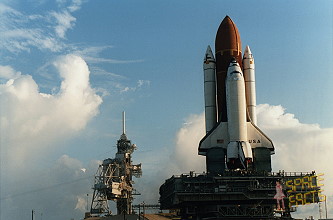 |
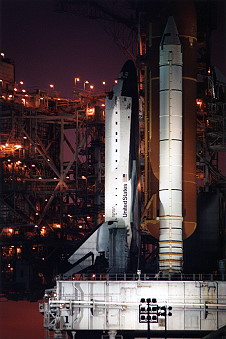 |
 |
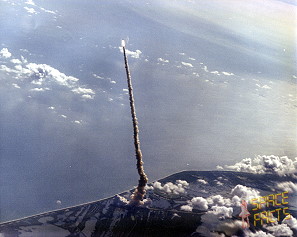 |
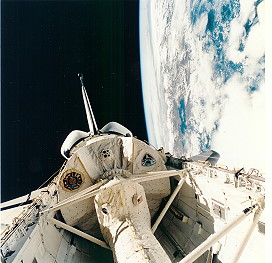 |
 |
 |
 |
 |
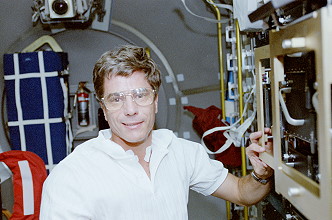 |
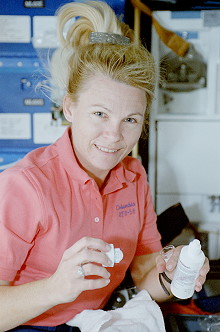 |
 |
 |
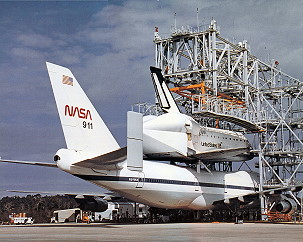 |
|
more Earth observation photos |
|
| © |  |
Last update on September 01, 2021.  |
 |